What is the field of Theranostics?
Theranostics is an emerging field of medicine which works on the principle that if diseased tissue can be identified and differentiated from surrounding healthy tissues, it can be treated without harming the healthy tissues.
There are two parts to the Theranostics process, diagnosis and therapy. In fact, the term “Theranostics” is a combination of the words “therapy” and “diagnostics,” with the order of the words reversed. Both the diagnosis and the therapy use an injectable medicine called a radiopharmaceutical.
What is a radiopharmaceutical?
A radiopharmaceutical is a medicine that is created by linking a medicinal compound to a minute molecule of radiation called a radioisotope. Different medicinal compounds are specific for different types of diseased tissues. Different radioisotopes can either image tissues or kill them. The specific combination of the medicinal compound and radioisotope determines whether the radiopharmaceutical will be used to image the diseased tissue or kill it.
How do radiopharmaceuticals work?
Radiopharmaceuticals are typically injected into the veins, after which they travel throughout the body, seeking out and attaching to the diseased tissue.
For diagnosis, the radiopharmaceutical has a low dose radioisotope. After it is injected, the diagnostic radiopharmaceutical attaches to the diseased tissue, and emits a low dose of radiation, which is detected by an imaging exam such as PET/CT, SPECT/CT, or scintigraphy. This allows not only for the diseased tissue to be identified and localized, but it also confirms that the therapeutic form of the radiopharmaceutical will correctly target the diseased tissue in order to kill it.
HOW DOES THERANOSTICS DIAGNOSIS WORK?
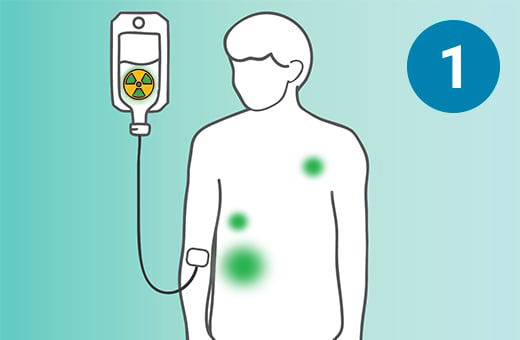 1) The radiopharmaceutical is infused through an IV.
1) The radiopharmaceutical is infused through an IV.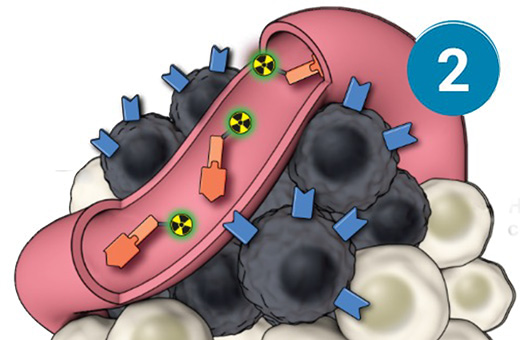 2) It seeks out diseased cells (in black) anywhere they have metastasized in the body.
2) It seeks out diseased cells (in black) anywhere they have metastasized in the body.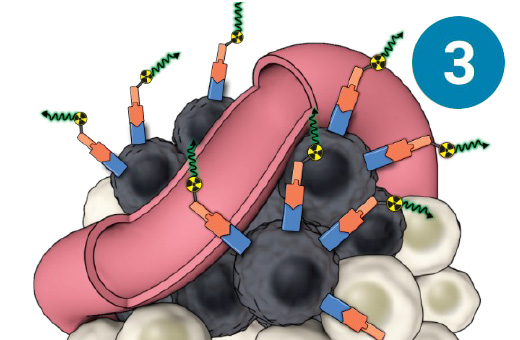 3) The radiopharmaceutical attaches to the diseased cells and emits a small amount of radiation that can be picked up by a PET/CT scanner.
3) The radiopharmaceutical attaches to the diseased cells and emits a small amount of radiation that can be picked up by a PET/CT scanner.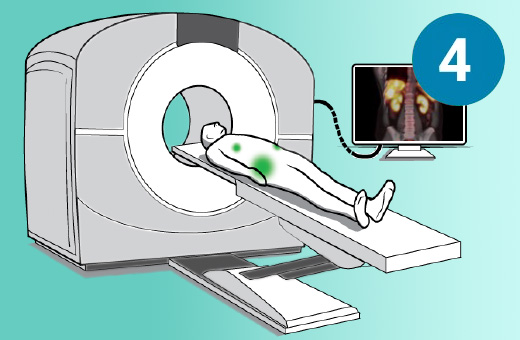 4) The patient is scanned, and the scans let radiologists know where the cancer can be found in the body.
4) The patient is scanned, and the scans let radiologists know where the cancer can be found in the body.For therapy, the radiopharmaceutical has a high dose radioisotope. After it is injected, the therapeutic radiopharmaceutical attaches to the diseased tissue, and emits a high dose of radiation, which kills the diseased tissue. The radiopharmaceutical does not attach to the surrounding healthy tissues in any significant amount. The surrounding tissues are therefore largely spared from the treatment. Most radiopharmaceutical therapies are given by infusion, which is an IV (intravenous) medication given over a number of minutes or hours. Sometimes the infusion is given just once, but most often a treatment will consist of separate infusions given several weeks apart.
HOW DOES THERANOSTICS THERAPY WORK?
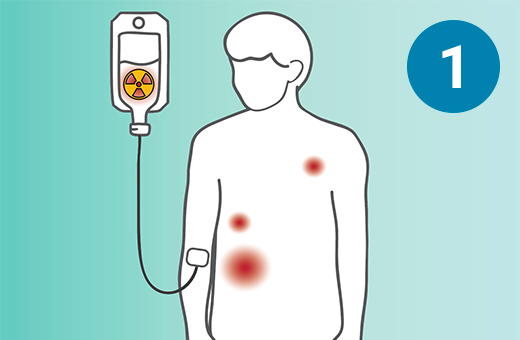 1) The radiopharmaceutical is infused through an IV.
1) The radiopharmaceutical is infused through an IV.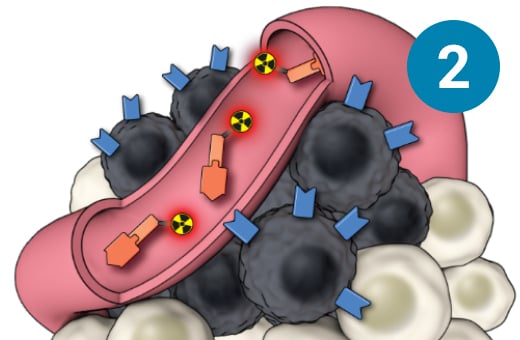 2) It seeks out prostate-diseased cells (in black) anywhere they have metastasized in the body.
2) It seeks out prostate-diseased cells (in black) anywhere they have metastasized in the body.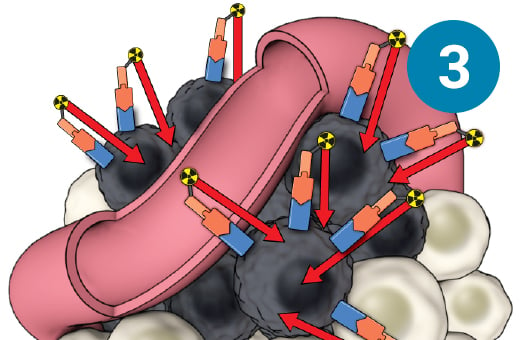 3) The radiopharmaceutical attaches to the diseased cells and delivers a microscopic amount of radiation.
3) The radiopharmaceutical attaches to the diseased cells and delivers a microscopic amount of radiation.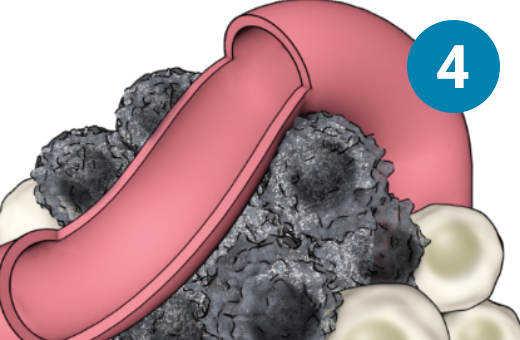 4) The radiation kills the targeted cells, leaving surrounding healthy tissue (in white) unharmed.
4) The radiation kills the targeted cells, leaving surrounding healthy tissue (in white) unharmed.Benefits of Theranostics
Effectiveness
Because the injected radiopharmaceuticals are carried by the bloodstream throughout the entire body, they will find disease wherever it may be hiding, even microscopic disease that cannot be visualized.
Comfort
Not only are Theranostics procedures simple, noninvasive, and comfortable, but side effects are generally mild and well-tolerated.
More information
Learn more about ARA’s radiopharmaceutical treatments:
- PSMA-targeted therapy for advanced prostate cancer
- SSTR-targeted therapy for neuroendocrine cancer
- I-131 for hyperthyroidism
- I-131 for thyroid cancer
For information on ARA’s advanced molecular imaging that does not have a treatment component, please visit our molecular radiology exam section.
